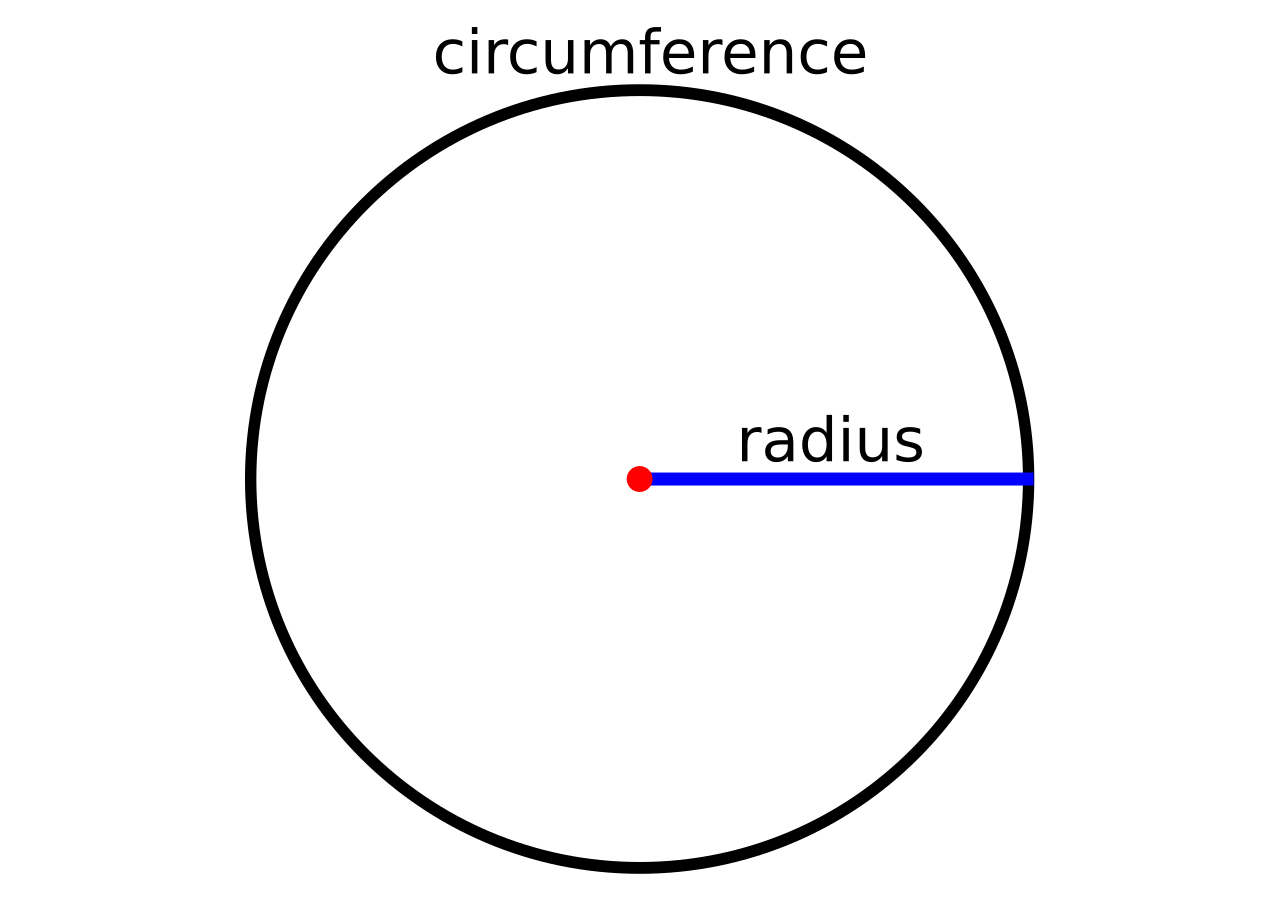Circumference and Area of a Circle Calculator
Enter the radius or diameter of the circle:
Result:
Our Circumference Calculator is a comprehensive tool designed to calculate the circumference (perimeter) of any circle using either the radius or diameter. Whether you're a student learning geometry, an engineer working on circular designs, or someone planning a circular project, this calculator provides instant, accurate results with detailed step-by-step solutions and comprehensive educational content.
Understanding circumference calculations is fundamental in mathematics and has countless practical applications in engineering, construction, manufacturing, and daily life. From determining the distance a wheel travels in one rotation to calculating the length of material needed for a circular border, circumference calculations are essential skills in both academic and professional settings.

How to Use the Circumference Calculator
Our intuitive calculator makes finding circle circumferences effortless:
- Input Method: Choose whether you know the radius or diameter of your circle
- Enter Value: Input your measurement in the appropriate field
- Units: The calculator works with any unit (inches, centimeters, meters, feet, etc.)
- Calculate: Click the "Calculate" button for instant results
- Results: View both circumference and area along with all related measurements
The calculator automatically provides both circumference and area calculations, giving you complete circle information in one convenient tool.
Understanding Circle Circumference
Circumference is the distance around the edge of a circle - essentially the perimeter of a circular shape. It's one of the most important measurements in circular geometry and has practical applications in countless real-world scenarios.
Key Circle Terms
- Circumference (C): The distance around the circle's edge
- Radius (r): The distance from the center to any point on the circle's edge
- Diameter (d): The distance across the circle through its center (d = 2r)
- Pi (π): The mathematical constant approximately equal to 3.14159
Circle Circumference Formulas
There are two primary formulas for calculating circumference, depending on your known measurement:
Formula Using Diameter
C = πd
This is the most straightforward formula where:
- C = Circumference
- π (pi) ≈ 3.14159
- d = Diameter of the circle
Formula Using Radius
C = 2πr
When you know the radius:
- C = Circumference
- π (pi) ≈ 3.14159
- r = Radius of the circle
Step-by-Step Calculation Methods
Method 1: Using Diameter
- Measure the diameter: Find the distance across the circle through its center
- Apply the formula: C = πd
- Multiply: Diameter × π (3.14159)
- Calculate result: This gives you the circumference
C = πdC = 3.14159 × 10C = 31.4159 meters
Method 2: Using Radius
- Measure the radius: Find the distance from center to edge
- Apply the formula: C = 2πr
- Calculate: 2 × π × radius
- Find result: This gives you the circumference
C = 2πrC = 2 × 3.14159 × 7C = 43.982 inches
Understanding Pi (π) in Circumference Calculations
Pi (π) is crucial for all circle calculations and represents the ratio of any circle's circumference to its diameter. This relationship is constant for all circles, regardless of size.
Key Facts About Pi
- Value: π ≈ 3.14159265358979...
- Nature: Irrational number with infinite, non-repeating decimals
- Discovery: Known to ancient civilizations over 4,000 years ago
- Applications: Essential in all circular and spherical calculations
- Precision: Modern computers have calculated π to trillions of decimal places
Reverse Calculations: Finding Radius and Diameter from Circumference
Finding Diameter from Circumference
To find diameter when you know circumference: d = C/π
- Divide the circumference by π
- The result is the diameter
d = C/πd = 25.13/3.14159d ≈ 8.0 feet
Finding Radius from Circumference
To find radius when you know circumference: r = C/(2π)
- Divide the circumference by 2π
- The result is the radius
r = C/(2π)r = 37.7/(2 × 3.14159)r = 37.7/6.28318r ≈ 6.0 cm
Common Circumference Problems and Solutions
Problem Type 1: Wheel Distance Calculation
Problem: A bicycle wheel has a diameter of 26 inches. How far does the bicycle travel with one complete wheel rotation?
Solution:
Distance = Circumference = πd = 3.14159 × 26 = 81.68 inches
Problem Type 2: Circular Track Length
Problem: A circular running track has a radius of 50 meters. What is the total distance for one lap?
Solution:
Distance = C = 2πr = 2 × 3.14159 × 50 = 314.16 meters
Problem Type 3: Material Requirements
Problem: You need to install a border around a circular garden with a diameter of 12 feet. How much border material do you need?
Solution:
Material needed = C = πd = 3.14159 × 12 = 37.7 feet
Real-World Applications of Circumference Calculations
Transportation and Automotive
- Tire Manufacturing: Calculating tire circumference for speedometer calibration
- Gear Ratios: Determining mechanical advantage in circular gears
- Odometer Settings: Programming vehicle computers for accurate distance measurement
- Track Design: Planning circular race tracks and curves
Construction and Engineering
- Pipe Design: Calculating circumference for pipe fittings and connections
- Circular Buildings: Planning material requirements for round structures
- Infrastructure: Designing circular roadways and traffic circles
- Drainage Systems: Sizing circular drainage pipes and manholes
Manufacturing and Design
- Product Design: Creating circular components and parts
- Quality Control: Measuring circumference tolerances in manufacturing
- Material Planning: Calculating strip lengths for circular wrapping
- Machinery Design: Sizing belts, pulleys, and rotating components
Sports and Recreation
- Track and Field: Standard running track measurements and lane calculations
- Equipment Design: Sizing circular sports equipment and playing areas
- Pool Construction: Planning circular swimming pools and spas
- Playground Equipment: Designing circular play structures
Advanced Circumference Concepts
Arc Length Calculations
For portions of a circle, arc length can be calculated using:
Arc Length = (θ/360°) × 2πr where θ is the central angle in degrees
Multiple Circle Systems
When dealing with multiple concentric circles:
- Each circle has its own circumference
- Circumference increases linearly with radius
- Ratio between circumferences equals ratio between radii
Tips for Accurate Circumference Calculations
- Use Precise π Value: For high accuracy, use π = 3.14159265 or the calculator's π function
- Measure Carefully: Ensure accurate diameter or radius measurements
- Unit Consistency: Keep all measurements in the same units
- Round Appropriately: Round final answers based on measurement precision
- Double-Check: Verify calculations using alternative methods when possible
Common Mistakes to Avoid
- Confusing Radius and Diameter: Always verify which measurement you have
- Using Wrong Formula: Match the formula to your known measurement
- Incorrect π Value: Avoid using 3.14 when higher precision is needed
- Unit Confusion: Ensure consistent units throughout calculations
- Rounding Too Early: Keep full precision until the final answer
Other Similar Calculators
Check out other calculators that are similar to this one.
Practice Problems with Solutions
Problem: A bicycle wheel has a radius of 13 inches. How far does the bicycle travel when the wheel makes one complete rotation?
Solution:
Given: radius (r) = 13 inches
Formula: C = 2πr
Calculation: C = 2 × 3.14159 × 13 = 81.68 inches
Answer: The bicycle travels approximately 81.68 inches per wheel rotation.
Problem: You want to install a decorative border around a circular garden with a diameter of 20 feet. How much border material do you need?
Solution:
Given: diameter (d) = 20 feet
Formula: C = πd
Calculation: C = 3.14159 × 20 = 62.83 feet
Answer: You need approximately 62.83 feet of border material.
Problem: A circular track has a circumference of 400 meters. What is the radius of the track?
Solution:
Given: Circumference (C) = 400 meters
Formula: r = C/(2π)
Calculation: r = 400/(2 × 3.14159) = 400/6.28318 = 63.66 meters
Answer: The track has a radius of approximately 63.66 meters.
Frequently Asked Questions
Key Takeaways
- Essential Formulas: C = πd (using diameter) or C = 2πr (using radius)
- Reverse Calculations: r = C/(2π) and d = C/π to find dimensions from circumference
- Pi Constant: π ≈ 3.14159 is the same for all circles regardless of size
- Practical Applications: Used in transportation, construction, manufacturing, and daily life
- Unit Consistency: Keep measurements in the same units throughout calculations
- Measurement Accuracy: Ensure you know whether you have radius or diameter
- Real-World Value: Essential for wheel mechanics, circular construction, and design work
Find Calculator
Popular Calculators
Other Calculators
